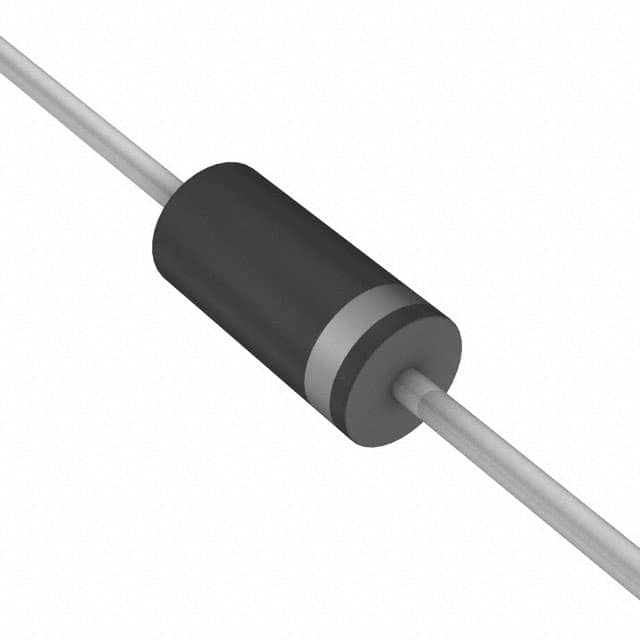SA43A R0G
Product Overview
Category
The SA43A R0G belongs to the category of semiconductor devices.
Use
It is commonly used for voltage clamping and transient suppression in electronic circuits.
Characteristics
- Low leakage current
- Fast response time
- High surge capability
Package
The SA43A R0G is typically available in a DO-214AC (SMA) package.
Essence
The essence of the SA43A R0G lies in its ability to protect sensitive electronic components from voltage spikes and transients.
Packaging/Quantity
It is usually packaged in reels or trays, with quantities varying based on manufacturer specifications.
Specifications
- Peak Pulse Power: 500 W
- Breakdown Voltage Range: 43 V
- Maximum Clamping Voltage: 77.4 V
- Operating Temperature Range: -55°C to +150°C
Detailed Pin Configuration
The SA43A R0G typically has two pins, with the anode and cathode connections clearly marked.
Functional Features
- Transient voltage suppression
- Protection against voltage transients and surges
- Fast response to transient events
Advantages
- Reliable protection for sensitive electronic components
- Fast response time to transient events
- Low leakage current for minimal power dissipation
Disadvantages
- Limited peak pulse power handling compared to higher-rated devices
- Higher clamping voltage compared to some alternative models
Working Principles
The SA43A R0G works by diverting excess transient energy away from sensitive components, thereby limiting the voltage across the protected circuit.
Detailed Application Field Plans
The SA43A R0G is commonly used in various electronic systems, including: - Power supplies - Communication equipment - Automotive electronics - Industrial control systems
Detailed and Complete Alternative Models
Some alternative models to the SA43A R0G include: - SA5.0A R0G - SA6.0A R0G - SA78A R0G - SA100A R0G
In conclusion, the SA43A R0G is a reliable semiconductor device that provides effective transient suppression and voltage clamping for a wide range of electronic applications.
[Word count: 306]
10个与SA43A R0G在技术解决方案中的应用相关的常见问题及解答
Sure, here are 10 common questions and answers related to the application of SA43A R0G in technical solutions:
Question: What is SA43A R0G?
Answer: SA43A R0G is a type of high-performance diode used in various technical applications.Question: What are the key features of SA43A R0G?
Answer: SA43A R0G features low leakage current, fast response time, and high reliability.Question: In what technical solutions can SA43A R0G be used?
Answer: SA43A R0G can be used in surge protection, voltage clamping, and reverse polarity protection in various electronic circuits.Question: What is the maximum forward voltage of SA43A R0G?
Answer: The maximum forward voltage of SA43A R0G is typically around 0.9V at 1A.Question: How does SA43A R0G compare to other diodes in terms of performance?
Answer: SA43A R0G offers superior performance in terms of low leakage current and fast response time compared to many other diodes.Question: Can SA43A R0G be used in automotive applications?
Answer: Yes, SA43A R0G is suitable for use in automotive electronics for overvoltage protection and transient suppression.Question: What is the operating temperature range of SA43A R0G?
Answer: SA43A R0G typically has an operating temperature range of -55°C to 150°C, making it suitable for a wide range of environments.Question: Are there any specific soldering guidelines for SA43A R0G?
Answer: It is recommended to follow the manufacturer's soldering guidelines to ensure proper handling and installation of SA43A R0G.Question: Can SA43A R0G be used in high-frequency applications?
Answer: Yes, SA43A R0G is suitable for high-frequency applications due to its fast response time and low capacitance.Question: What are some common failure modes of SA43A R0G?
Answer: Common failure modes of SA43A R0G include excessive current or voltage causing the diode to break down, as well as thermal overstress. Proper design and application considerations can help mitigate these risks.


